
How We Do Conversion Rate Optimization
We Come Up With an Optimization Strategy
We firmly believe that the first step in increasing conversion is to develop an optimization strategy. We take the time to get to know your business and your customers so that we can tailor a strategy that will work for you.
We Add Social Proof
We've helped many clients increase their online sales and signups. This is by showing real-time testimonials, reviews, and case studies on their websites. We know that social proof will improve your website's credibility and trustworthiness.
We A/B Test Landing Pages
We understand that a remarkable landing page can make or break your business, and are committed to helping you succeed. We have years of experience creating high-converting landing pages, and know what works and what doesn't.
We Analyze, Analyze & Analyze
Once the optimization strategies are in place, we continuously test and analyze the results to ensure that you get the most out of your website. We then make suggestions to improve your conversions.
We Fix Sales Funnel Issues
We exactly know what it takes to get your Sales Funnel up and running smoothly so that you can start making more sales. We get the job done right and work tirelessly until your sales funnel runs like a well-oiled machine.
We Make Your Website Elements Mobile-friendly
Our team is passionate about delivering the best possible user experience for your visitors, regardless of their device. We are relentless in our pursuit of perfection, and we are always up for a challenge.
We add Scarcity Elements to Your Site
Our optimizers know that when people feel like they might miss out on something, they are more likely to take action. That is why we add countdown timers, limited stock notifications, and other scarcity elements to your site.
We Rely on Data
We believe in the power of data-driven decisions. We use customer insights and hard data to help our clients increase their website conversions. Our approach is based on understanding your customers and what motivates them.
12 Benefits of Conversion Rate Optimization (CRO)
Increased Traffic and Leads
CRO will increase web traffic and leads because it allows you to better understand how people interact with your website. By identifying areas of improvement and making changes, you can see a significant increase in traffic and leads.
Improved Customer Retention Rates
By personalizing the user experience based on past behavior, CRO ensures that customers see relevant content. This will increase the chances of them finding what they are looking for and staying on the site.
Faster Time to the First Sale
Using CRO techniques, you can quickly assess how well your website is currently performing. Subsequently, you can make changes to improve its conversion rate. This will help you achieve your sales goals more quickly.
Reduced Marketing Costs
CRO helps businesses reduce their marketing costs. This is by increasing the number of customers who complete an action, such as making a purchase or subscribing to a service. It achieves this by improving the effectiveness of your marketing efforts.
More Satisfied Customers
By understanding what customers want and need, businesses can work to provide those things. This will ensure that the customers are happy. Satisfied customers are more likely to stick around, meaning that CRO can be an essential part of keeping a business successful.
More Revenue
CRO can help identify and target potential customers who are most likely to buy the company's products or services. It can help create effective marketing campaigns that reach these customers and persuade them to buy your products.
Understanding of Your Customers
CRO helps you understand your customers through a variety of methods. They include analytics to track how visitors interact with your site and surveying your customers to understand their needs.
Improved Website Usability
CRO involves studying how users interact with a website and making changes to the layout, design, and content. The changes will make it easier for users to find what they are looking for. In other words, it will improve your website's usability.
Identify Issues That Drag You Down
Techniques such as A/B testing and user feedback analysis help you identify and fix any barriers. The barriers usually prevent people from buying from your site. It can help you identify usability problems, poor design, or low-quality content.
Reduction in Cost-per-Acquisition
CRO can help businesses reduce their cost per acquisition by increasing the number of customers they bring in at a lower cost. This is because you will need to spend less money on advertising to attract new customers.
Increased Customer Lifetime Value
CRO can be used to increase the lifetime value of customers by increasing the number of repeat purchases and the average purchase amount. It also increases customer loyalty by encouraging customers to recommend the site to their friends.
Less Frustrated Customers
When CRO is done well, it can result in less frustrated customers and increased customer satisfaction. This is because they will be more likely to find what they are looking for on your website and complete the desired action.
Conversion Rate Optimization
Conversion Rate Optimization (CRO) is a marketing technique used to increase the number of website visitors who complete a conversion action, such as purchasing a product or signing up for a newsletter.
CRO is often used with other marketing strategies, such as website design and content creation. It involves testing different marketing campaigns and tactics to find the most effective ones in driving conversions.
Techniques used in CRO include:
- Optimizing website content and design
- Using effective web advertising.
- Improving website layout and navigation.
By understanding what factors influence conversion rates, businesses can better target their marketing efforts and improve their bottom line.
This article aims at bringing you the crucial elements of CRO with which you can take your business to a whole new level.
Importance of CRO
![]() To Reduce Your Customer Acquisition Costs
To Reduce Your Customer Acquisition Costs
Reducing customer acquisition costs is important because it allows businesses to invest more money into marketing efforts that bring in new customers. This, in turn, helps to grow the business and increase profits.
Additionally, a lower customer acquisition cost means that a business can profit more from each new customer.
Also, by reducing your customer acquisition cost, you can increase the lifetime value of each customer. This will ultimately result in a higher overall profit.
Here’s how to calculate the Customer Acquisition Cost (CAC)

CRO allows businesses to convert more website visitors into customers with fewer marketing dollars. By improving conversion rates, businesses can reduce the number of website visitors who need to be reached to generate a desired number of sales or leads.
CRO achieves these things by improving the effectiveness of marketing campaigns and the usability of websites.
![]() To Understand Your Customers Better
To Understand Your Customers Better
Using CRO, a business can understand how well its website converts visitors into customers. It does this by analyzing the data collected from visits to the website.
The data include:
- What pages are being visited
- How long do people stay on each page
- What actions (if any) are people taking on the website.
This information can then improve the website by converting visitors into customers.
Google Analytics is a fantastic tool for understanding your customers better.
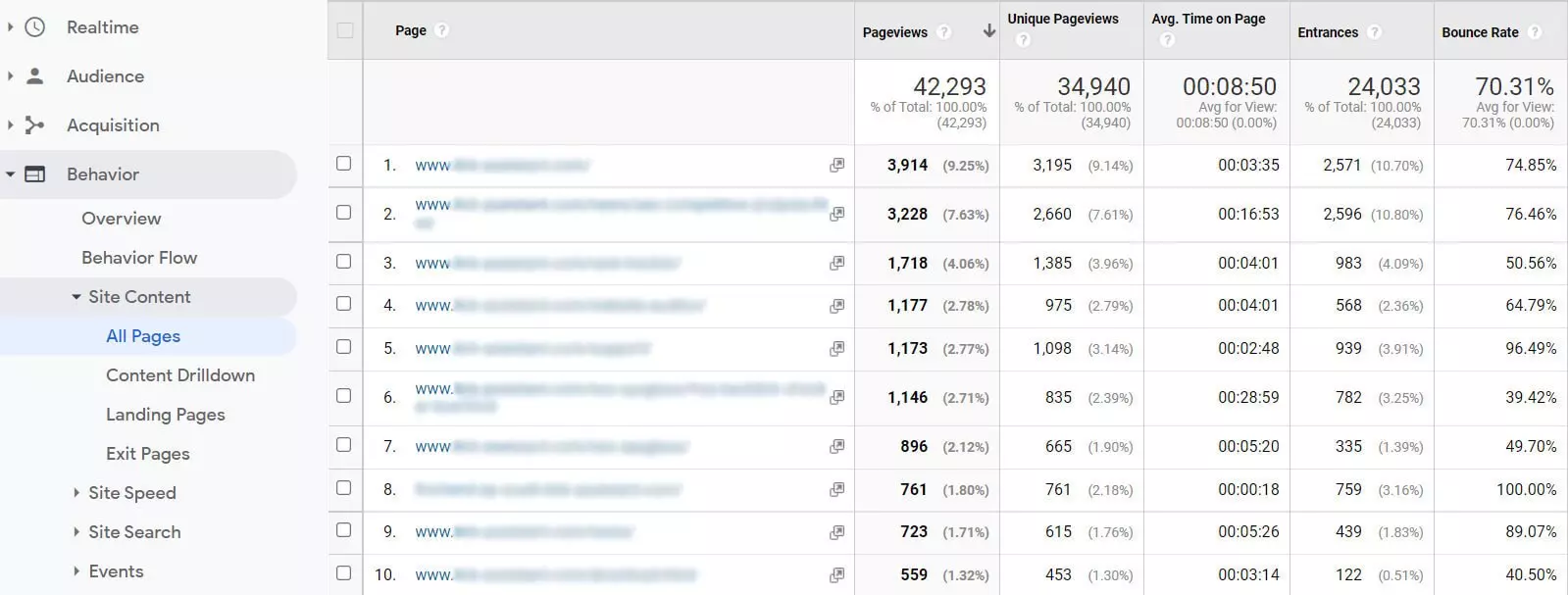
By understanding how and why your customers behave in specific ways on your website, you can make relevant changes that lead to more conversions.
For example, say that a business sees many customers leave their website without buying anything. In that case, they might change the layout or design of their website to make it more user-friendly.
Read: Tips to Design an SEO Friendly Website
![]() To Attract More Customers
To Attract More Customers
CRO typically involves using data analytics to identify which elements of a website effectively persuade visitors to act and then make changes to those elements to increase conversion rates.
It can help businesses gain more customers by increasing the number of people who visit the website and then converting them into paying customers.
This can be done by improving any aspect of a website that influences this conversion rate, including the design, usability, copy, and marketing. A business can gain more paying customers from its existing traffic by improving the conversion rate.
A/B testing is an effective method of improving website aspects to attract more customers.
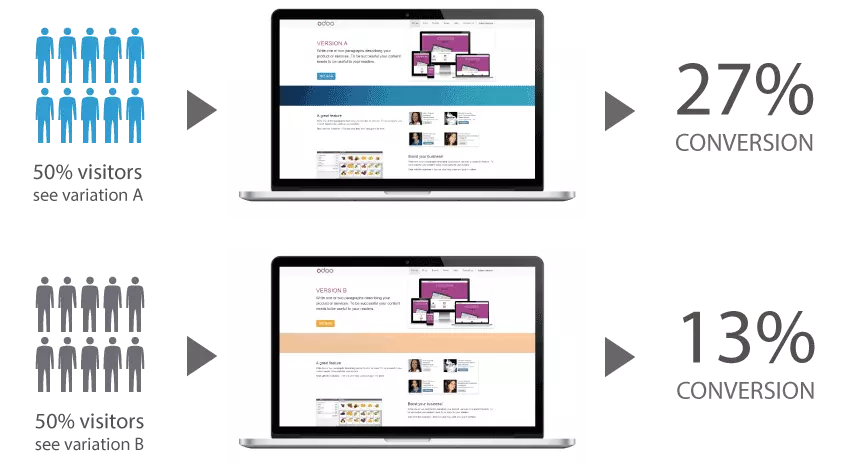
![]() To Outsmart Your Competitors
To Outsmart Your Competitors
CRO techniques include improving the website's design, creating more effective calls to action, and testing different versions of web pages to see which generates the most conversions.
It often uses heatmaps and user recordings to track how users interact with your website. It then identifies areas where they are getting stuck or dropping off.
Here’s an example of a heatmap from ManageEngine.

The data will help increase the conversion rate, which, in turn, allows businesses to outperform their competitors. This is because one can bring more revenue from the same number of website visitors.
![]() Because Pay-per-click Costs are on the Rise
Because Pay-per-click Costs are on the Rise
Compared to pay-per-click (PPC) ads, CRO is often a more cost-effective way to improve website traffic and reduce customer acquisition costs. This is because PPC campaigns are typically based on bidding for keywords.
The cost of each click can vary greatly depending on the keyword's competitiveness.
On the other hand, CRO is based on improving the effectiveness of website elements that influence visitor behavior, such as the layout, design, copy, and calls to action. As a result, CRO can be more effective in driving conversions at a lower cost than PPC.
You can choose a professional website layout from here.

![]() To Increase Customer Attention Span
To Increase Customer Attention Span
CRO aims to reduce the number of distractions on a page and complete the desired action as easily as possible. This, in turn, will increase customers' attention span. They will not be wasting time figuring out how to complete an action or being distracted by other page elements.
The goal here is to make it easy for customers to find what they are looking for and complete the desired action. This is done by making small changes to the website.
The adjustments will make it easier for people to find what they are looking for and buy what they need.
When customer attention span increases, bounce rate decreases. You can measure that using Google Analytics.

![]() To Elevate Your Website's Look and Feel
To Elevate Your Website's Look and Feel
CRO is the process of making small changes to a website to see if those changes result in more people visiting the site and then staying on the site for longer periods. This is done by testing different website versions and measuring how well each version performs.
This process ultimately improves the look and feel of a website. This makes it easier for people to find what they are looking for on your website.
Common techniques include improving the layout of pages, making buttons and links more visible, and reducing clutter.
The goal is to make it as easy as possible for users to complete the desired action, whether making a purchase, signing up for a newsletter, or downloading an e-book.
Here’s an example of a cluttered website that reduces users' time on the page.
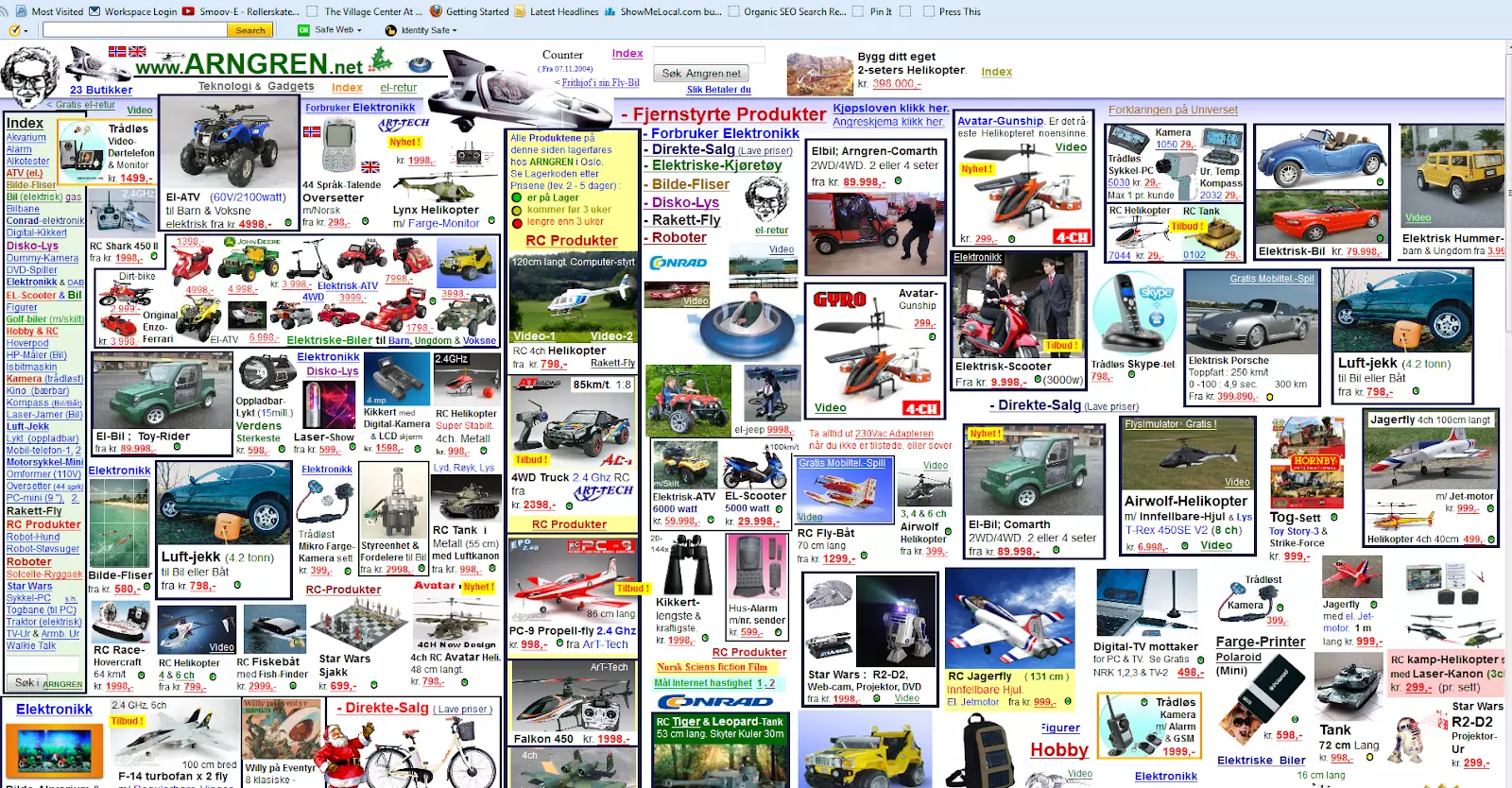
![]() To Maximize ROAS
To Maximize ROAS
A business can use countless optimization techniques to boost its return on advertising spend (ROAS). However, CRO is one of the most effective and efficient methods for increasing ROAS.
CRO does this by doing the following things
- Identifying and correcting user errors.
- Optimizing landing pages to convert more visitors into customers.
Implementing easy-to-access CTA buttons on landing pages is an effective CRO strategy.

- Measuring and optimizing web traffic sources to improve the quality of leads and conversions.
- Testing different web page versions to see which one converts customers at the highest rate.
The information above can be used to improve the website and increase ROAS.
Conversion Rate Optimization Tips
![]() Remove Unwanted Form Fields
Remove Unwanted Form Fields
One downside of having too many form fields on a web page is creating a cluttered and overwhelming user interface. Also, if there are too many form fields, users may be less likely to complete the form.
This is because filling out a form can be time-consuming and frustrating if there are too many questions to answer (a big turn-off!)
Furthermore, users may become confused and frustrated if the form fields are not properly formatted or if the labels are not clear. It can also be difficult for users to know what information is required from them and what is optional.
This can lead to user confusion and mistakes.
Too many form fields can harm conversions. When users are confronted with too many form fields, they may be less likely to complete the form.
This is because they may not want to spend the time filling out all of the information, or they may not trust that the form will actually be useful in helping them meet their needs.
Tips:
- Ensure that form fields are appropriately labeled.
- Provide feedback on user input (Example: Voila! You have successfully signed up for our newsletter.
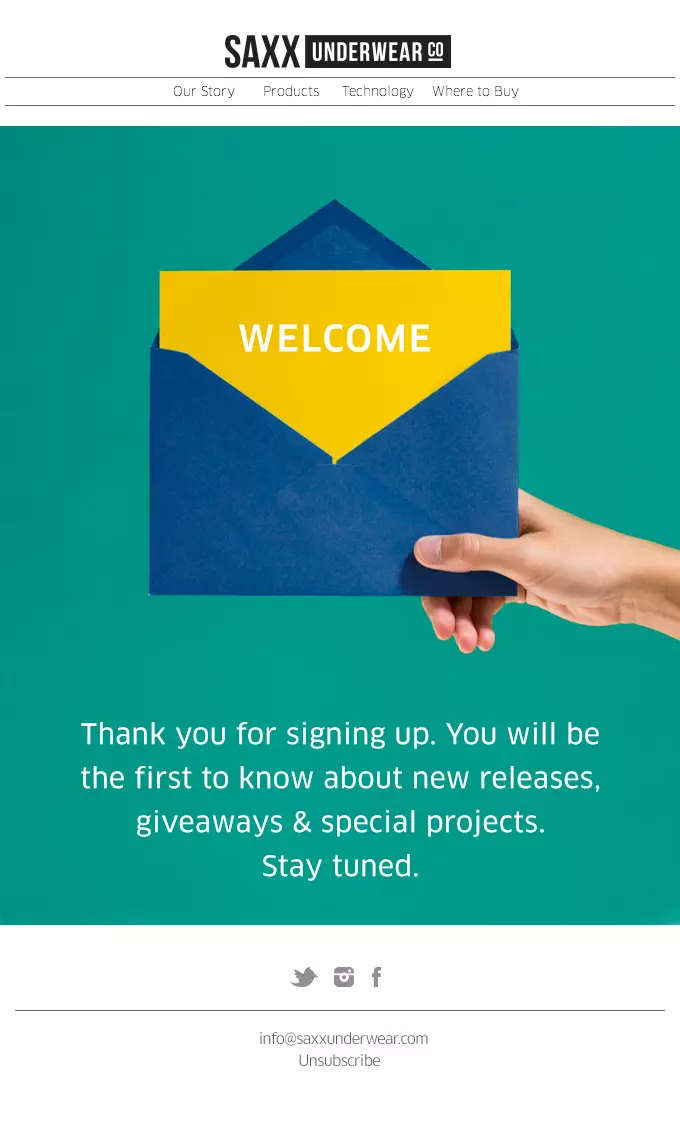
- Mention which fields are mandatory with clear labels.
- Include specific input types (such as dropdowns or calendars) to help users input data correctly.
![]() Use Text-based CTAs in Blog Posts
Use Text-based CTAs in Blog Posts
Text-based CTAs, or call-to-actions, allow for a more personal and engaging user experience, encouraging more people to interact with the CTA.
In addition, they provide more information about the offer or product than a traditional CTA. This can help potential customers better understand what they are clicking on and why they should do so.
The addition of text-based CTAs to blog articles can be beneficial in a few ways. First, it can help improve the overall readability of the article. Also, it can provide readers with an additional opportunity to learn more about the topic being discussed.
The best part is that they are less intrusive than other CTAs, such as pop-ups, and therefore can be more effective in getting people to take action. They are often used on websites and in email marketing campaigns. They can be very effective at getting users to interact with your content.
Tips:
- Use clear and concise language in CTAs
- Use action verbs to encourage readers to take action. For example, "register now" or "sign up today."

- Place the actual/ real picture of the product/ service in a prominent place on the landing page.
![]() Use Trust Seals
Use Trust Seals
When customers browse a website, they look for trust signals that will tell them the site is safe to use. One of these signals is a Trust Seal.
A Trust Seal is a graphic or text on a web page that indicates that the site has been certified as trustworthy by a third party. This third party could be an organization like VeriSign or TrustE or an independent expert like Better Business Bureau.

They are basically a visual cue to indicate that the site is trustworthy. They are often used to increase conversions to help build trust with potential customers.
These seals can be used by businesses of all sizes and can be customized to fit the needs of each business. They are important because they help reassure potential customers that they are dealing with a reputable company, leading to more sales and conversions.
![]() Create Scarcity and Urgency
Create Scarcity and Urgency
This tip does wonders for eCommerce businesses. It does not mean that other businesses will get nothing out of it. "Online retailers can make the best out of this tip" is what we are saying.
To create a sense of urgency and encourage potential buyers to take action, online retailers can use the principle of scarcity. This involves limiting the availability of a product or service to create a sense of urgency.
When potential buyers believe that there is a limited supply of a product or service, they are more likely to take action and purchase it before it is too late. This increased urgency can lead to more conversions, as customers feel like they need to buy now to get the best deal.
There are a few ways to create scarcity in your eCommerce business. They are:
- Set a low stock limit or offer the product for a limited time.

- Make the product unique or exclusive. This can be done by making the product only available to a select group of people or only available in certain locations.
- Use a timer for your advantage.
- Limit the number of items ordered per person or per order.
![]() Use Testimonials
Use Testimonials
Testimonials play a significant role in increasing the likelihood of people converting to your site. They serve as social proof, providing potential customers validation that others have had positive experiences with your company or product.
Also, testimonials can help build trust and credibility with potential buyers. Ensuring that you have a variety of customer testimonials, including videos, will help you convert more visitors.
By providing real-life examples of how others have been helped, you give the company an air of authority and expertise. This ultimately makes potential customers feel more confident in what they are purchasing.
Three helpful tools:
- Vouch - A tool that helps you collect authentic testimonials.
- TrustPulse - A social proof app that shows customer activity on your site.
- Smash Ballon - A plugin to display social media feed on your site.
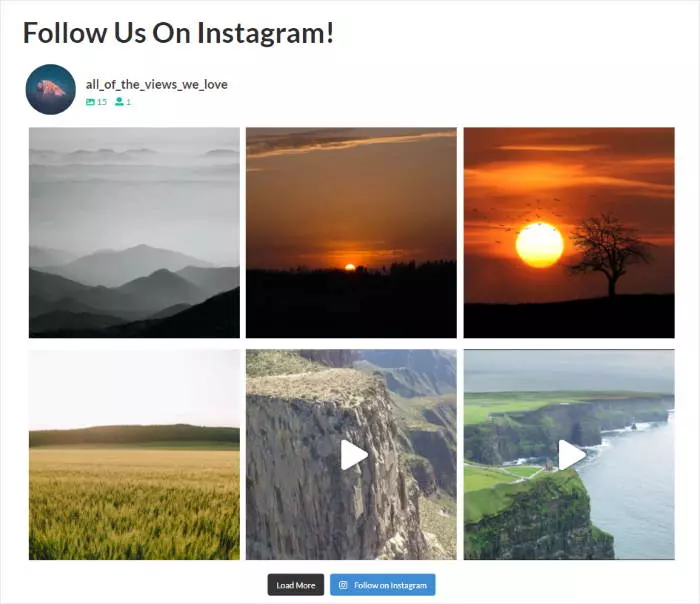
![]() A/B Test Your Landing Pages
A/B Test Your Landing Pages
A/B testing, also known as split testing, compares two versions of a web page or app against each other to see which performs better.
You can use VWO to run A/B tests on your landing pages.
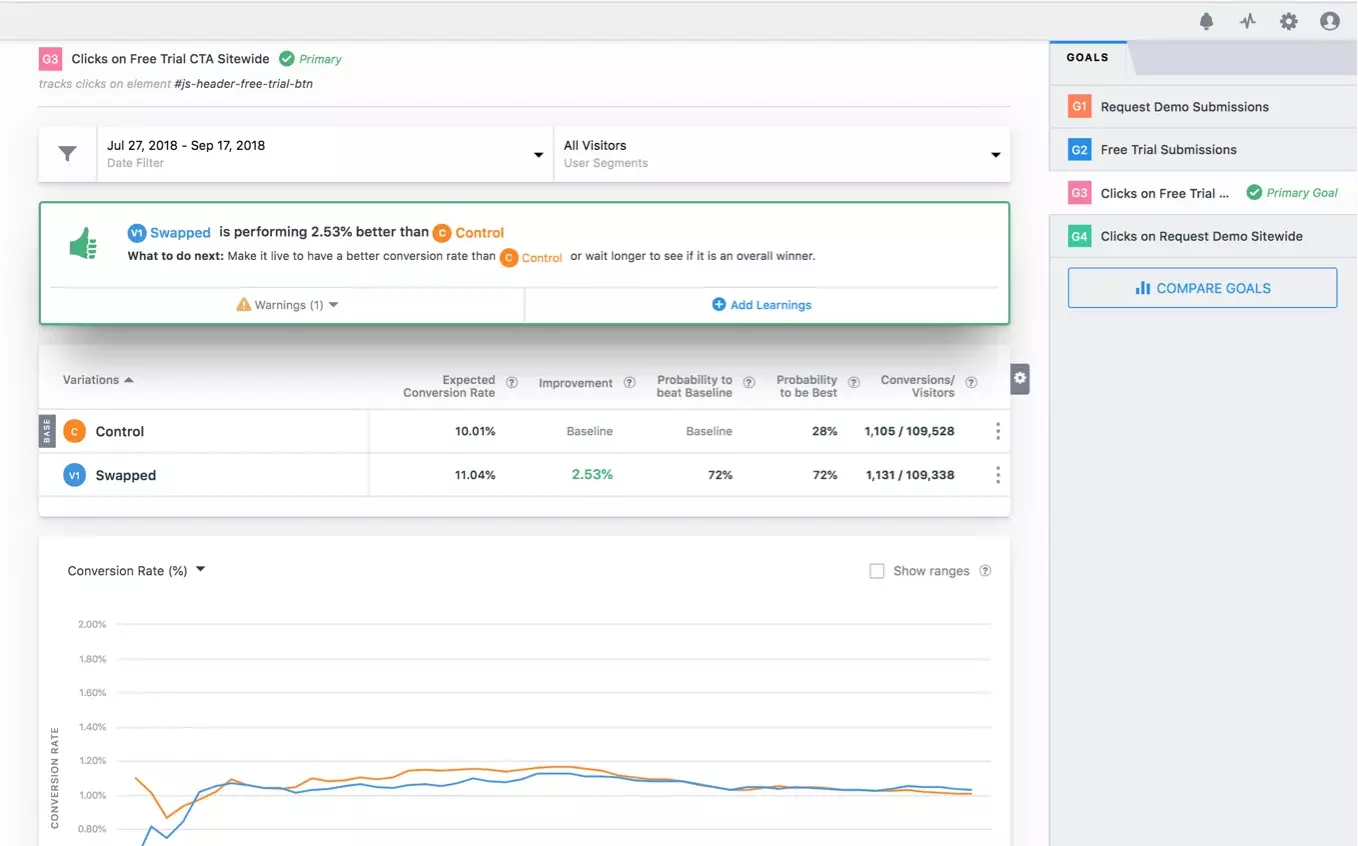
For example, you can test any of the following on a landing page
- Text
- Images
- Call-to-action
- Forms
- Design
- Color scheme (Why not?)
By performing A/B tests, you can determine which elements are most effective and improve your conversion rate.
This is important because it can help businesses optimize their page to get the most out of their traffic. Also, split testing can help businesses identify potential areas of improvement on their page, such as the design, the copy, or the offer.
![]() Use Chatbots for Your Advantage
Use Chatbots for Your Advantage
Chatbots are computer programs that can mimic human conversation. They are becoming increasingly important for online businesses because they can help increase conversions.
An AI-powered chatbot can help convert visitors into customers by engaging them in a conversation. They can also answer questions about the company's products or services and provide customer support (to an extent, though).
The use of chatbots can be extremely advantageous for businesses looking to increase their conversion rates. By providing a conversational interface for customers, businesses can create a more personal connection with their customers and drive them to purchase products or services.
Also, these bots can help you learn more about your customers' needs and preferences, empowering you to better tailor the products and services to meet those needs.
Three best chatbots to consider for your business:
- Intercom - Built for sales, marketing, and support.
- IBM Watson - A chatbot that uses AI.

- Acquire - A conversational chatbot for a human-like experience.
![]() Always Retarget
Always Retarget
Retargeting is an important technique to increase online conversions by targeting website visitors with relevant ads after leaving a site.
It uses complex algorithms to target potential customers based on their browsing history. It improves the chances that a customer will return and make a purchase.
Retargeting can also help reduce the number of wasted advertising dollars. This is because potential customers who do not convert the first time can be targeted again with more relevant ads (and with less ad spend!)
By targeting these people with ads relevant to their interests, you can increase your chances of converting them into customers.
Another benefit of remarketing is that it is cost-efficient. This is because you can target people who have already shown an interest in your product or service. It means that you are not wasting money on advertising to people who may not be interested in what you offer.
Three helpful tools for remarketing:
- Mailchimp - An easy-to-use marketing platform.

- SharpSpring Ads - A platform for mobile and web retargeting.
- Criteo - A dynamic retargeting tool.
![]() Use Pop-ups (But Wisely, Though!)
Use Pop-ups (But Wisely, Though!)
Pop-ups can help improve conversion rates by providing a targeted and relevant message to users who are already interested in the product or service. They can also provide a sense of urgency, encouraging users to convert more quickly.
.webp)
They can be used to make visitors sign up for a newsletter, buy a product, or some other goal that you, as an advertiser, try to achieve.
Also, they can be customized to target specific users based on their interests or past behavior, making them more likely to be relevant and useful.
Studies have shown that pop-ups can be effective at improving conversion rates. They are more likely to grab the user's attention than traditional advertisements, such as banner ads.
Tip:
Use exit-intent pop-ups in your favor. They are important in converting customers because they are the last chance a customer has to convert before leaving your site.
![]() Improve Page Speed
Improve Page Speed
Studies show that increasing page speed can improve conversion rates significantly.
When pages load slowly, visitors are less likely to stick around and explore the site further. This is especially true for mobile users, who are more likely to leave a website that takes more than three seconds to load.
The importance of page speed in improving conversions can be explained by the fact that it can affect the user experience on the website. In general, people do not like to wait for a web page to load for a long time. And if a website is too slow, they are likely to leave it and look for another one.
Also, fast-loading pages make it easier for visitors to find what they are looking for, leading to a better user experience.
Tips to improve page speed:
- Ensure the website is properly coded and that no slow scripts are running in the background.
- Optimize images and make sure they are not too large in file size.
You can use Optimizilla to compress the file size of images.

- Use a caching plugin.
![]() Offer Free Shipping
Offer Free Shipping
This may seem like a no-brainer. But trust us! Many online retailers still charge their customers a shipping fee. They are yet to understand how offering Free Shipping can dramatically increase conversion rates.
It is one of the most effective ways to increase a website's conversion rate. When customers know that they won't have to pay any "additional charge" on top of the cost of the product they're buying; they're more likely to make a purchase.
They don't have to worry about spending more money than expected, which can often deter shopping online.

Also, free shipping can encourage customers to buy more items at once since they won't have to worry about paying extra for shipping on each product.
Tip: Always keep an eye on your margins and only offer free shipping on items that are already profitable.
![]() Optimize Your Landing Pages for Mobile
Optimize Your Landing Pages for Mobile
By ensuring that your landing pages are properly formatted for mobile devices, you can improve the user experience and increase your conversion rates.
Mobile users are often in a hurry, so it is important to ensure that the most important information is easy to find. The overall design should be clean and uncluttered.
Landing pages for mobile devices can be optimized by using smaller images and avoiding elements like Flash.
You can also use a responsive design to adapt the page to the device's size. Another way to optimize landing pages for mobile devices is to use simplified navigation and shorter forms.
A few tips to consider:
- Keep the number of clicks necessary to complete a task to a minimum.
- Keep navigation buttons easily accessible.
Implementing a side navigation bar helps users quickly access pages through mobile.

- The text should be sized appropriately for small screens.
- Use clear CTAs and easy-to-find contact information.
Common Conversion Rate Optimization Mistakes People Make
![]() Poor Quality Content
Poor Quality Content
You may have heard this line countless times. Let us stress it one more time! When it comes to digital marketing, content is the king.
Quality content relevant to your audience can help you improve your website's conversion rate. It does this by providing users with the information they need to make a purchase decision or sign up for a service.
However, say that your website's content is low in quality, irrelevant, or plagiarized (Honestly, don't steal!) In that case, it can hurt your conversion rate by causing users to abandon your site.
This is because poor-quality content can be seen as unprofessional and can diminish consumers' trust in the site.
Read: Will Thin Content Attract Penalty?
Also, poor-quality content can be difficult to read and understand, leading to frustration and a lower likelihood of converting.
Tips:
- Use data and examples to back up your points
- Make sure your content is easy to read and digest
- Use strong CTAs to encourage readers to take action.

![]() Not Using a Responsive Design
Not Using a Responsive Design
Unresponsive design can affect a website's conversion rate in two ways.
- First, if the website is not responsive, it may be difficult to view mobile devices.
- Second, if your website's design is too cluttered or not easy to navigate, users may be less likely to convert.
Poor design can cause confusion and frustration among users, leading to them leaving the website without converting. The experience may lead them to have a negative impression of the company.
Some go for eye-catching designs/themes that are not always responsive to different devices. While this may look nicer to some, it can often make the website difficult to use on different platforms.
For example, a website with many images and animations may look flashy on a desktop. Still, it might not be very functional on a mobile device.
You can test the responsiveness of your website on multiple devices using this tool.

![]() Under-optimized Landing Pages
Under-optimized Landing Pages
Information persuades visitors to complete the desired action, such as filling out a form or making a purchase. Under-optimized or non-optimized landing pages can affect conversion rates by not providing enough information to visitors.
This can be due to a lack of clarity in the design or copy or because the page is not mobile-friendly. Visitors who cannot easily navigate or understand a page are more likely to leave without converting.
Tips:
- Add a compelling headline
- Use different colors or fonts to highlight key information.
Notice how the headings have a different font
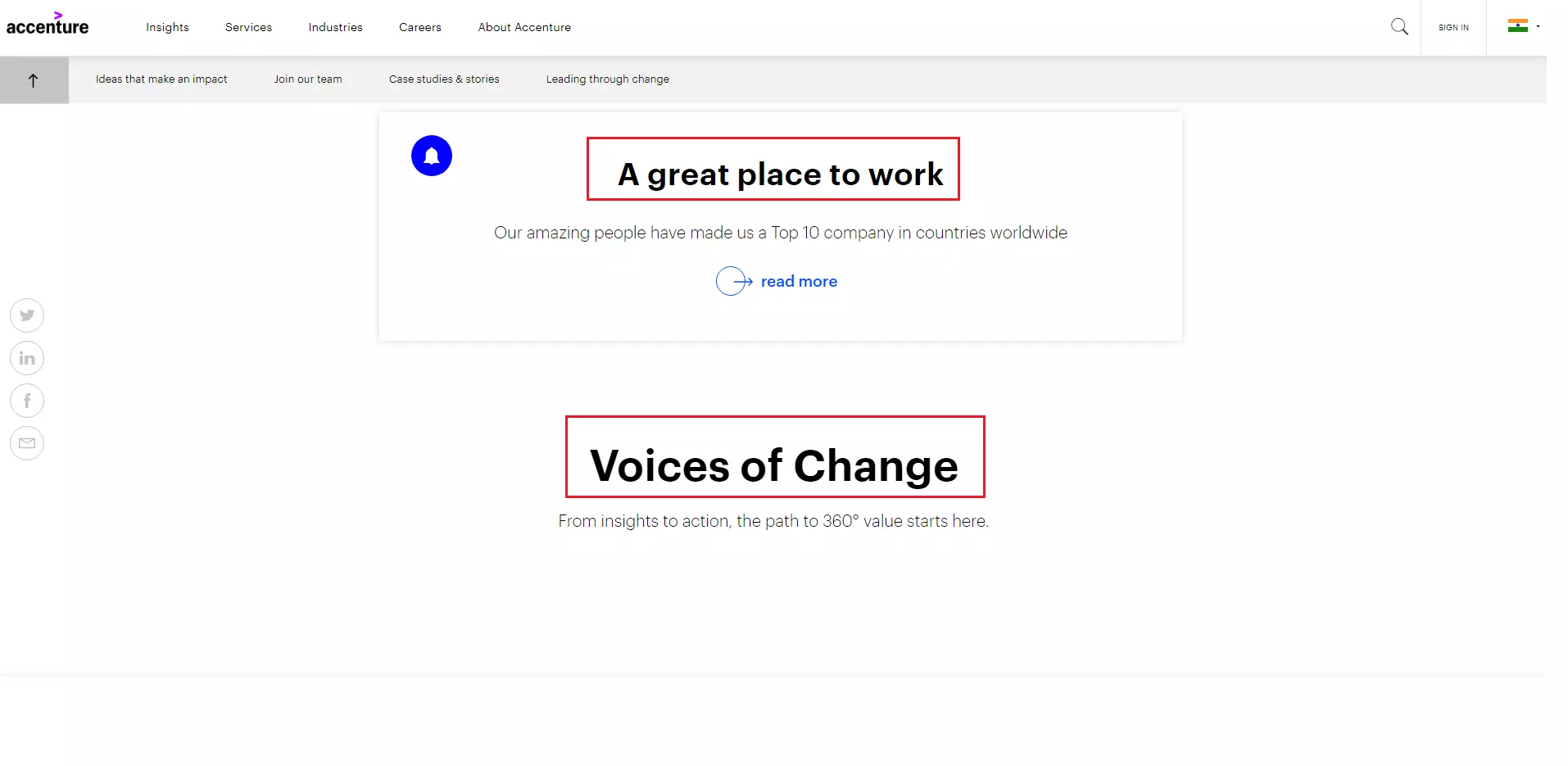
- Improve the page layout so that it is easier for visitors to navigate.
- Use persuasive language and design elements to create a sense of urgency.
- Test different versions of the page.
![]() Not Including Predictive Search Engines
Not Including Predictive Search Engines
If you are not using predictive search engines on your website, it will affect your conversion rate. Predictive search engines are a type of search engine that can help you find what you need on a website before you even finish typing it.
This is helpful because it means you don't have to type in the whole thing, and it also means that you're more likely to find what you're looking for. This is helpful for websites because people are more likely to find what they're looking for, leading to a higher conversion rate.
Even as I write this, I remember using the predictive search engine earlier this morning on an online furniture store to check for a "60-inch width mattress." And guess what! I found what I was looking for and ordered one too.
These engines work by studying past customer behavior and then using that data to guess what future customers might want.
Tools that may interest you:
- WP Fastest Site Search - Adds autocomplete & image search to your WP site.
- Predictive Search - A plugin dedicated to WooCommerce sites.
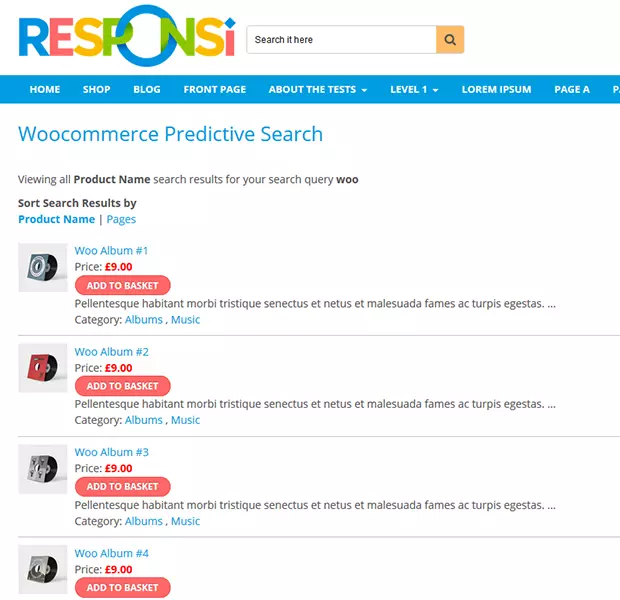
- Fetchify - A data validation product for address auto-fills.
![]() Cumbersome Checkout Process
Cumbersome Checkout Process
When a customer has to navigate through a complicated checkout process, it can lead to frustration and a decreased likelihood of conversion.
This is because customers may become overwhelmed by the number of steps involved in completing their purchase or encounter errors requiring them to start the process again.
Also, say that customers must create an account or fill out detailed personal information to check out. In that case, they may be less likely to complete the purchase.
A cumbersome checkout process is also time-consuming and frustrating. This can cause them to abandon the purchase entirely or go for a more user-friendly site.
Tips:
- Ensure that the form is simple and easy to fill out
- Pre-populate certain information (Example: ZIP, state, and country)
- Use a progress bar to show how close they are to completing the checkout.

![]() Staying off A/B Tests
Staying off A/B Tests
When it comes to designing a landing page, many people mistake not testing different page versions to see which one performs better. This is especially important when figuring out how to convert more visitors into customers.
There are a few disadvantages of not A/B testing landing pages in conversion rates. One is that you may not be able to measure the effectiveness of your page accurately.
Without testing, you may not know what elements on your page are causing people to leave without converting.
- Pingdom: Copy and paste the landing page URL in Pingdom to test its loading speed for different geographical locations.
Check out these amazing tools:
- A free A/B Testing Kit - Learn about A/B testing, significance calculator, etc.
- Google Optimize - Offers three types of testing.

- Optimizely - One of the fastest experimentation platforms.
![]() Ignoring Customer Insights
Ignoring Customer Insights
When a company ignores customer insights, it essentially shuts itself from potential growth and success. Customers are the lifeblood of any business. Their feedback is essential to understanding what changes or improvements need to increase conversion rates.
Reviews on your GMB profile can provide valuable insights into how customers feel about your business.
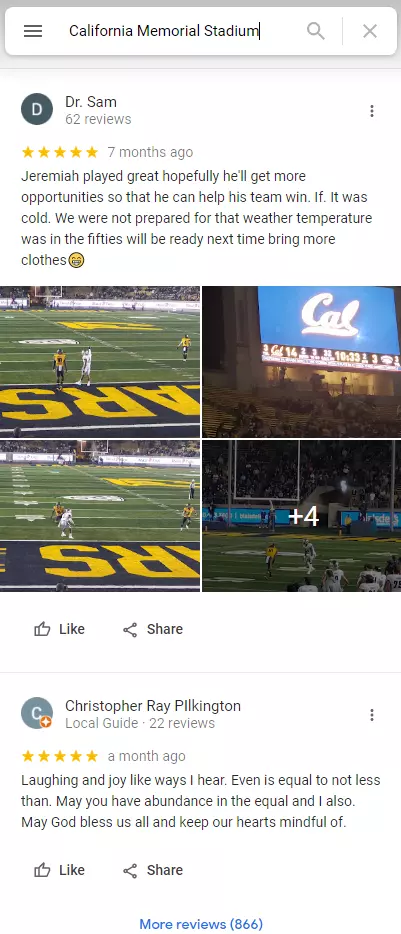
Without customer insights, businesses blindly guess what might improve their marketing or product, leading to missed opportunities and a decreased chance of success.
Tips:
- Read customer insights to figure out what makes your customers tick.
- Learn what motivates them, what scares them, and what excites them.
- Use this information to create marketing materials/offers that appeal to them.
- For example, you might learn that many of your customers look for a coupon before purchasing. (On a side note, I always look for one during purchases!)
![]() Inadequate Customer Support
Inadequate Customer Support
Some businesses do not understand that poor customer support will decrease conversion rates. This is because they don't measure the impact of customer support on their bottom line.
In other words, they may not be quantifying the impact that a negative customer experience has on their business (read conversions).
Also, many businesses believe that providing good customer support is expensive and time-consuming. If you are among them, we tell you that there are cheaper alternatives. Consider using free chatbots such as QuickReply.ai, Engati, and Mobile Monkey.
Here’s a screenshot of QuickReply.ai

Research has shown that businesses that invest in providing good customer support see a significant return on investment.
![]() Lack of Coherence between Ad copy and Landing Page Content
Lack of Coherence between Ad copy and Landing Page Content
Marketers often create ad copy that does not match the content of their landing pages. This can lead to a disconnect between what the customer expects to find when they click on an ad and what they see. This can cause confusion and frustration, leading customers to abandon your site.
To create a successful marketing campaign, it is important to ensure that your ad copy and landing page content is aligned and coherent.
Tips:
- Use similar language to ensure that the overall tone of the two pages matches.
- Keep the layout and design of the two pages consistent.
Notice how this ad copy has the same tone as Nike’s website.

- Ensure that the offer (if any) on the landing page matches what is promised in the ad. (Please avoid clickbait!)
![]() Using Too Many Pop-ups
Using Too Many Pop-ups
Pop-ups are a double-edged sword. Not many know how to handle it, and some overuse it. Too many pop-ups can affect conversion rates by overwhelming potential customers. This causes them to leave the site without converting.
Pop-ups (if overused) are often intrusive and disrupt the user's experience on the site. Also, too many pop-ups can slow down the loading time, leading to lost conversions.
Tips:
- Ensure that the pop-up is easy to close and does not obscure the page's main content.
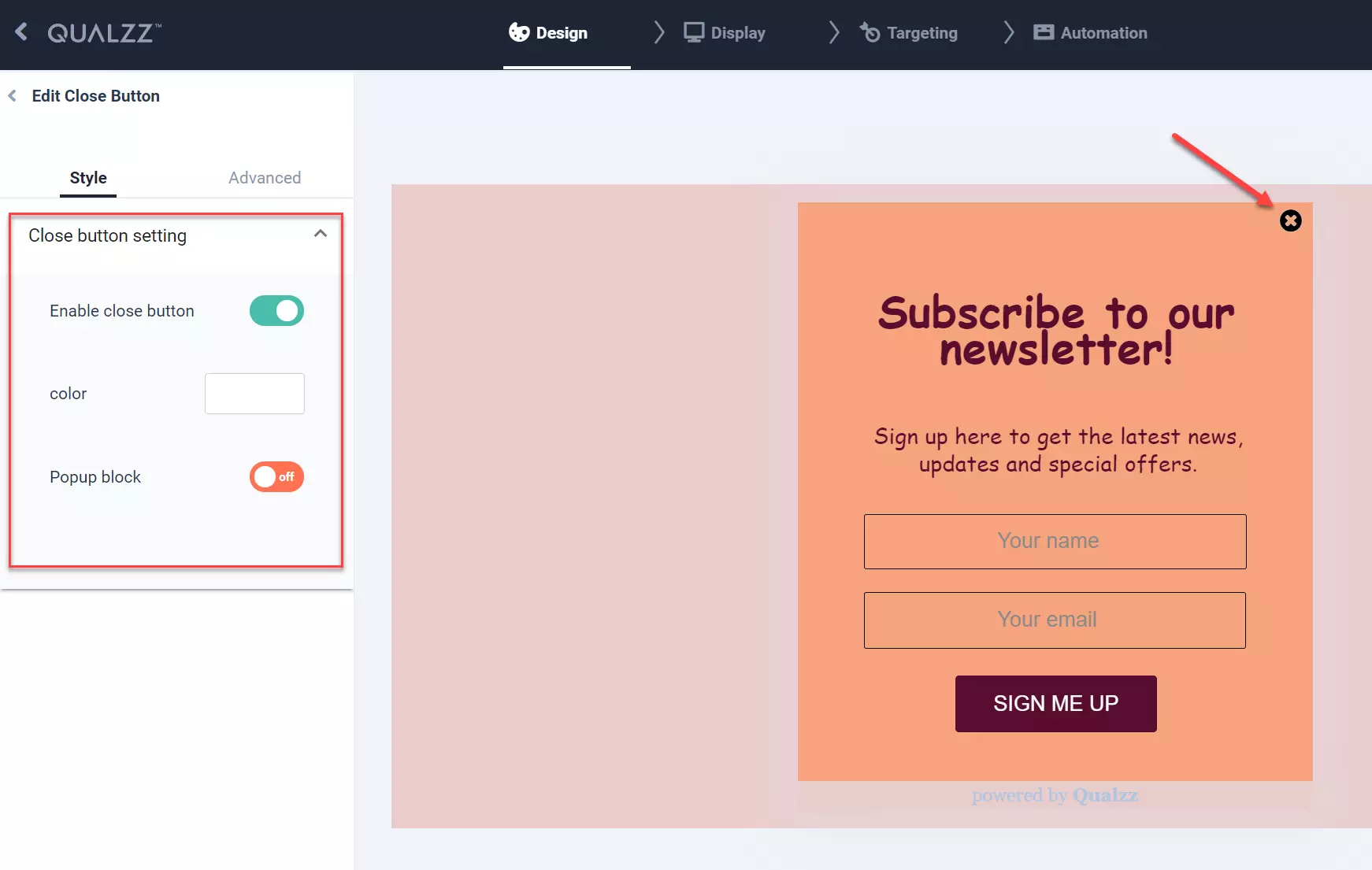
- Use a clear and concise CTA.
- Test different types of pop-ups to see what works best for your audience.
![]() Not Understanding that CRO is a Process
Not Understanding that CRO is a Process
Some think that CRO is a one-time thing; it's a continuous process that requires constant testing and analysis to identify opportunities for improvement.
A successful CRO strategy depends on understanding your audience and what motivates them to take action.
It involves continually testing and tweaking elements of the website such as design, layout, copy, and CTAs to increase conversion rates. Website owners need to be prepared to commit time and resources to CRO on an ongoing basis to see results.

There is no one-size-fits-all approach in CRO, so you'll need to experiment with what works best for your site.
Tip: Constantly refine and update your site elements based on data collected from analytics tools.
![]() Messing up With CTAs
Messing up With CTAs
Imperfect CTAs can affect conversion rates in a few ways. For example, suppose the CTA is not formatted or styled correctly. It may be difficult for users to see or understand what they need to do to convert.
Say that the CTA is not placed on the page in a visible or easily-accessible location. In that case, users may not see it or be able to find it in time to convert. If the CTA is too low on the page or too far down the form, people may not see it or forget to click it.
Another common mistake is using vague or boring language in the CTA.
Tips:
- Phrases like "sign up" or "click here" don't encourage people to take action.
- Instead, try using "sign up for awesomeness" or "Yes! I want x now!"
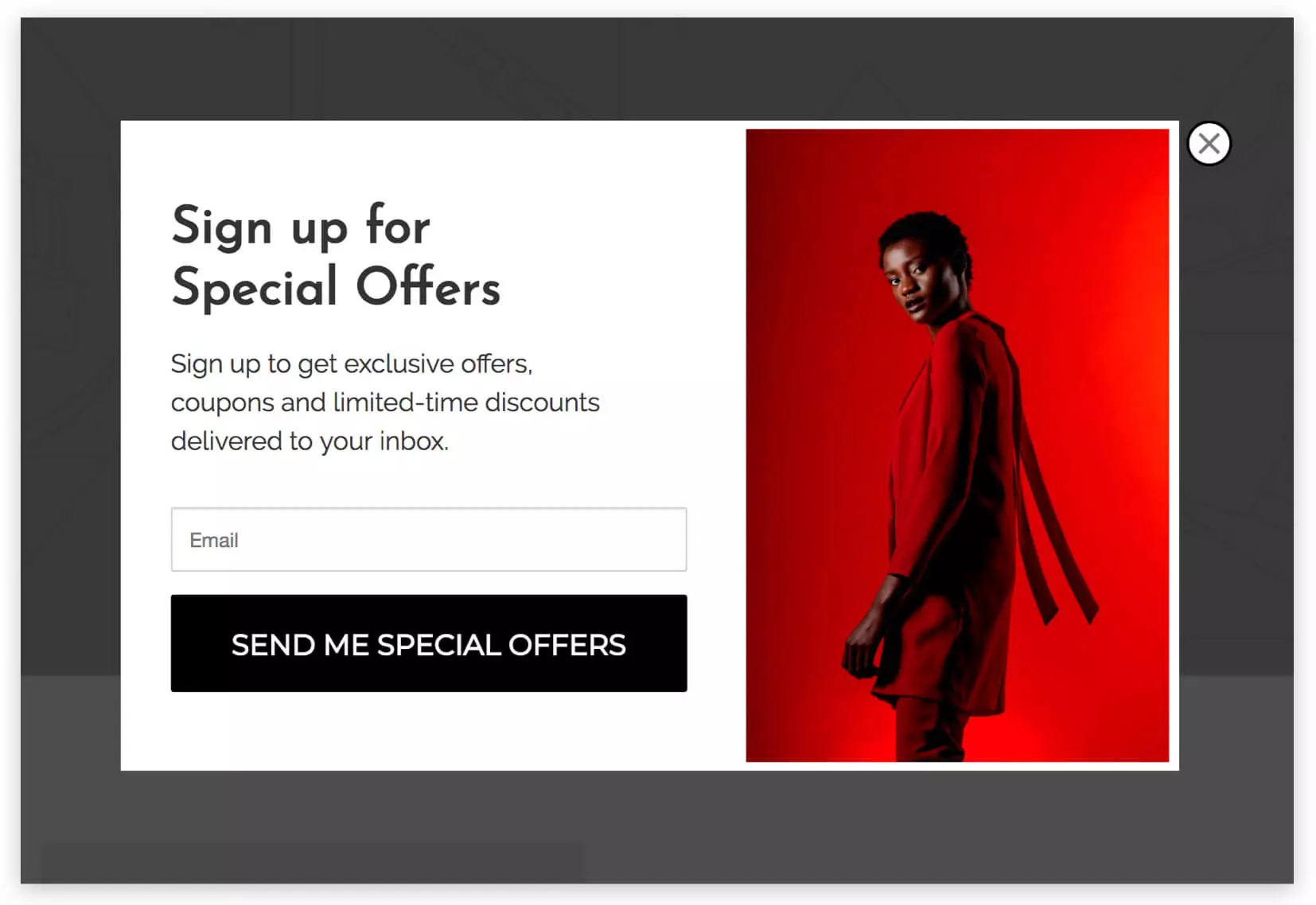
Five Important CRO Statistics
- 3.7% of visits to eCommerce sites in the US converted into sales in the third quarter of 2021
- The average CTR in FB Ads across all industries stands at just .90%
- Financial services websites achieve the highest average conversion rate (10%)
- The average conversion rate for landing pages is 2.35%
- The average conversion rate for Shopify stores is 1.6%
CRO FAQs
Why Is CRO Important?
CRO is important because it allows businesses to measure the effectiveness of their marketing campaigns and understand how well their website is performing.
How Do Videos Improve Conversion Rates?
Because videos can communicate messages more effectively than text alone, they can help to create a more engaging and interactive user experience. They can also help simplify complex ideas or processes, making them easier for users to understand.
What Are The Benefits Of CRO?
It can help you identify problems with your website that prevent people from converting. Also, it helps you figure out what elements of your website are most effective at persuading people to take action.
How Can I Improve My Website's Conversion Rate?
One method for improving a website's conversion rate is using A/B testing. Optimizing page elements such as headlines, images, and CTAs can help improve conversions. Focusing on user experience is also important for conversions.
How Do I Know If My Website Is Optimized?
There are many ways to know if your website is optimized. One way is to use a tool like Google Page Speed Insights. Another way is to look at your website's bounce rate.
How Long Does It Take To Optimize A Website For Conversion Rate Optimization?
There is no set amount of time to optimize a website for conversion rate optimization. It can depend on how many changes need to be made and how large the website is. It is usually recommended that a website undergoes a thorough analysis and optimization process that lasts for several weeks or even months to see significant results.
What Is A Good Conversion Rate?
There is no definitive answer to this question. It depends on several factors, such as the industry, the product or service, the target market, and the campaign goals.
How To Calculate Conversion Rate?
Conversion Rate is the percentage of people who take the desired action, usually buying something. To calculate it, divide the number of people who completed the desired action by the total number of visitors to the page.
Is CRO That Important?
CRO can be extremely important for businesses. It can help increase website traffic and conversion rates, increasing sales and revenue. Also, it helps improve the overall user experience and boosts customer loyalty.
How Long Should I Run CRO Experiments?
It is advisable to run CRO experiments for long enough to achieve statistically significant results.
What Are The Best Areas On The Website To Experiment With CRO?
Some general areas where one can experiment with CRO include website design, page layout, tone of the copy, images, videos, etc.
- Conversion Rate Optimization
- Importance of CRO
- To Reduce Customer Acquisition
- To Understand Your Customers
- To Attract More Customers
- To Outsmart Your Competitors
- Pay-per-click Costs are on the Rise
- To Increase Customer Attention
- To Elevate Your Website's
- To Maximize ROAS
- Conversion Rate Optimization Tips
- Remove Unwanted Form Fields
- Use Text-based CTAs in Blog Posts
- Use Trust Seals
- Create Scarcity and Urgency
- Use Testimonials
- A/B Test Your Landing Pages
- Use Chatbots for Your Advantage
- Always Retarget
- Use Pop-ups
- Improve Page Speed
- Offer Free Shipping
- Optimize Your Landing Pages
- Conversion Rate (CRO) Mistakes
- Poor Quality Content
- Not Using a Responsive Design
- Under-optimized Landing Pagesn
- Not Including Search Engines
- Cumbersome Checkout Process
- Staying off A/B Tests
- Ignoring Customer Insights
- Inadequate Customer Support
- Lack of Coherence between Ad copy and Landing Page Content
- Using Too Many Pop-ups
- Not Understanding CRO
- Messing up With CTAs
- Five Important CRO Statistics
- Conversion Rate Optimization FAQs

 To Reduce Your Customer Acquisition Costs
To Reduce Your Customer Acquisition Costs